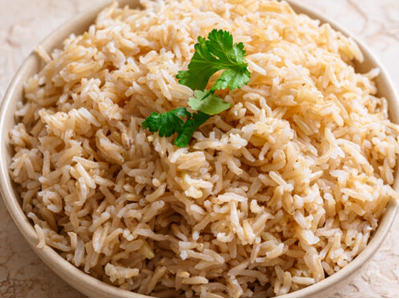Introduction
Bibimbap is one of the most iconic Korean dishes loved across the world for its vibrant colors, balanced nutrition, and bold flavors. While the rice, vegetables, and meat are important, the real soul of bibimbap is the sauce. The bibimbap sauce recipe is simple, quick, and full of deep umami flavors that give the dish its signature kick. Whether you enjoy spicy food or love exploring Korean culinary traditions, making bibimbap sauce at home is incredibly rewarding. This homemade version tastes just like the restaurant style, and once you prepare it, you will never go back to store-bought options.
What Makes Bibimbap Sauce Special?
This sauce combines rich Korean flavors using ingredients like gochujang (Korean red chili paste), garlic, sesame oil, soy sauce, and rice vinegar. Each element complements the others, creating a perfectly balanced taste — slightly spicy, a bit sweet, deeply savory, and rich in umami. When mixed with warm rice and fresh toppings, the sauce melts in beautifully, bringing harmony to every bite. This makes the bibimbap sauce essential for achieving an authentic Korean dining experience at home.
Ingredients for Bibimbap Sauce

To prepare the perfect bibimbap sauce, gather the following simple ingredients:
- 3 tbsp gochujang (Korean chili paste)
- 1 tbsp soy sauce
- 1 tbsp sesame oil
- 1 tbsp rice vinegar
- 1 tsp minced garlic
- 1 tsp sugar or honey
- 1 tsp toasted sesame seeds
- 1–2 tsp water (optional, to adjust thickness)
All these ingredients work together to create a bold and rich flavor. Gochujang brings heat and depth, sesame oil gives nutty aroma, and honey or sugar balances the spice with sweetness.
How to Make Bibimbap Sauce at Home
Making bibimbap sauce is incredibly easy and takes only a few minutes. Simply follow these steps:
- Add gochujang to a mixing bowl.
- Mix in soy sauce, sesame oil, vinegar, and sugar.
- Stir in minced garlic and sesame seeds.
- Whisk everything until smooth.
- Adjust the thickness with a teaspoon or two of water if needed.
Your flavorful homemade bibimbap sauce is ready. Let it rest for at least 5–10 minutes so the flavors blend properly. You can store it in the refrigerator in an airtight container for up to two weeks.
Taste and Texture
This sauce has a silky, thick texture that coats rice and vegetables beautifully. The flavor is rich, slightly smoky from gochujang, aromatic from sesame oil, tangy from vinegar, and just sweet enough to balance the spice. Even if you’re new to Korean cooking, you will immediately recognize the bold yet harmonious taste that makes bibimbap so popular.
Read also:-How to Cook Mapo Tofu Recipe: A Fiery, Flavorful Szechuan Classic
Serving Suggestions
Besides bibimbap, this versatile sauce works well with many dishes:
- Rice bowls
- Stir-fried vegetables
- Grilled chicken or tofu
- Noodles
- Lettuce wraps
- Dumplings dip
- Korean BBQ plates
Once you have this sauce ready, your kitchen will always be prepared for a quick and delicious Korean-inspired meal.
Tips for Best Flavor

- Use authentic gochujang for true Korean taste.
- Fresh garlic enhances the aroma more than powder.
- Toast sesame seeds for a nutty crunch.
- Add extra sesame oil if you like stronger aroma.
- Adjust sweetness and spice based on your preference.
For a vegan version, follow the same recipe — all ingredients are naturally plant-based.
Variations
You can experiment with different twists:
- Add grated ginger for warmth.
- Mix in a little mayonnaise for a creamy version.
- Add chili flakes for extra heat.
- Use maple syrup instead of sugar for depth.
These options allow you to customize the sauce based on your taste or pair it with different dishes.
Conclusion
Making Korean bibimbap sauce at home is simple, healthy, and more flavorful than store versions. The balance of gochujang, garlic, sesame oil, and vinegar gives your dish an irresistible aroma and taste. Whether you’re preparing traditional Korean bibimbap or creating your own rice bowls, this sauce will instantly elevate your meal with restaurant-style authenticity. Keep a jar ready in your refrigerator, and enjoy quick, comforting, and delicious Korean meals anytime.
FAQ
Q1: Can I make bibimbap sauce without gochujang?
Gochujang is essential for authentic flavor, but you can substitute with chili paste plus soy sauce and honey for a different but tasty version.
Q2: How long does homemade bibimbap sauce last?
It stays fresh for up to 2 weeks in an airtight container in the refrigerator.
Q3: Is bibimbap sauce spicy?
It has a mild to medium spice level, but you can adjust it by reducing or increasing gochujang.
Q4: Can I use this sauce for tofu or noodles?
Yes, it is perfect with tofu, noodles, stir-fries, grilled meats, and salads.
Q5: Is bibimbap sauce healthy?
Yes, it uses natural ingredients and has balanced flavors, making it a healthier option than many bottled sauces.

